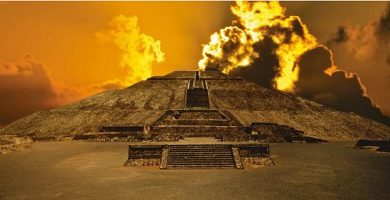What is a literary text?
We explain what a literary text is, its history and the expressive resources it uses. In addition, its classification and characteristics.
-
What is a literary text?
When we talk about a literary text we refer to a form of oral or written production that focuses on the aesthetic, poetic and playful forms of language , above the real, informative or objective content of the message.
The texts literary offer the reader subjective, free approaches of reflective, experiential or contemplative life content , without intention of more than raise that set of emotions and feelings in your mind.
For this, these artistic texts employ a whole range of expressive resources, known as tropes, rhetorical figures or literary figures, by means of which they can use language in a more powerful, more moving or even more rhythmic way.
In ancient Greece, the literary cradle of the West, the first literary analysis of history was made ( Aristotle’s Poetics ) and the place occupied by the genres of that time was detailed: dramatic, epic and lyrical.
Through them, Greek citizens were emotionally and civically trained, transmitting political, religious and moral values . Many of the texts of that time still survive among us.
Currently, however, reading literary texts is considered a leisure and recreation activity, or training in High Culture or Fine Arts . But due to its deep human content, it occupies a central place in the imaginary of the human being and constant winks are made in other discourses of culture , which use literature to better express its contents, such as psychoanalysis.
-
Characteristics of a literary text

A literary text, broadly speaking, has the following characteristics:
- It lacks practical purpose or immediate utility.
- Use language in unconventional, daring or avant-garde ways.
- It relates events that did not take place, or even real events but from fictional, impossible or novel perspectives.
- Expresses deep subjective or philosophical content.
- It has a certain extension and a concrete, immovable end point.
- They do not change over time , but are historically preserved.
-
Types of literary texts
Literary texts are classified according to four genres, called literary genres, which classify them based on the methods they have to provoke in the reader an aesthetic or playful effect, and which are the following:
- Narrative . When we talk about narrative we talk about short story, novel , micro- story , chronicle and other forms of the story, real or imaginary, fantastic or realistic. They emphasize the characters , the plot and especially the storyteller, who tells the story, generating similar expectations, tension and emotions to the reader.
- Poetry . The freest and most complex of literary arts, has virtually no specific format that defines it, except the idea of describing a subjective state of being: feelings, life perspectives, reflections or even a certain degree of narration , but without defined characters, Storytellers or plot. It is about creating your own language, which in the past should have rhymes and verses counted by syllables, but this practice is considered archaic today.
- Dramaturgy . The drama is intended for representation in the theater , film or television . It includes characters and scenarios, in situations that are happening in front of the spectator himself, without being mediated by the figure of a narrator at all.
- Test . This genre consists of the reflexive and explanatory approach (expository and argumentative) of any subject that interests the author, through an exercise of exposure that seeks to offer subjective points of view and novel perspectives, instead of scientifically proving a hypothesis or demonstrating some theory .
-
Literary text and non-literary text

Literary texts are distinguished from non-literary ones in a fundamental aspect: their usefulness. Although art is important, transcendent and valued, it really lacks any practical utility : a literary text is useless, it cannot be used except as it is: a reading , something that occupies time to get a subjective experience.
Non-literary texts, on the other hand, are all those that are operating in the world with a clear and obvious sense of utility: the instructions for using a washing machine, telephone messages written down in a notebook, a billboard, etc.





